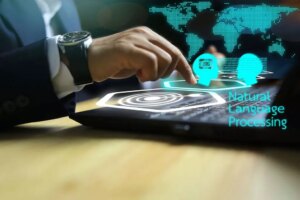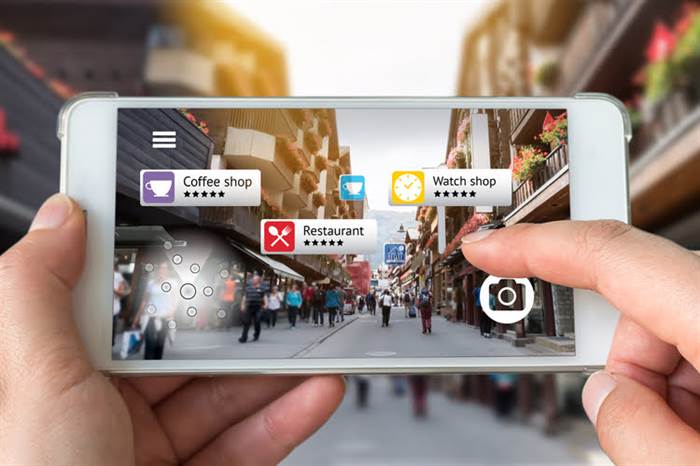The VA’s CareerScope tool can help you decide what jobs, classes, and training programs are right for you. With a unique set of tools and architecture, developers can build immersive 3D objects for any VR environment. Developers can integrate the library into React 360 to develop 3D objects and animations. You can apply it to any project starting from basic apps and ending with best-selling AAA games. Thanks to built-in C# scripting API and Visual Studio, developers can design interactive VR experiences in web browsers.

Therefore, social skills should also be taught, and there is no better tool for learning social skills than VR. So, children can learn how to react to different social situations and surroundings, including meeting digital avatars from all cultures around the world or being put in a scenario which deals with issues like racism or bullying. Children should learn how to respect diversity and how to interact in a diverse group.
Samsung Postpones XR Headset Following Apple Announcement
Several studies have found that the use of VR improves specific abilities and attitudes in science students. Implementing a 3D Virtual reality learning environment improved female students’ physics achievement and motivation toward physics learning (Al-Amri et al., 2020). Scherer and Tiemann (2012) found three what is virtual reality in education problem-solving abilities in virtual environments, achieving a goal state, systematic handling of variables, and solving analytical tasks. Implementing a Virtual Engineering Science Learning Lab (VESLL) has proven to improve student interest and learning experience in STEM education (August et al., 2016).

This study started with the three characteristics of space–time (derived from immersion, focusing on the teachers and students in different spaces teaching in the same virtual environment), imagination, and interactive VR (Chen et al., 2019a; Lee et al., 2020). The results of the study were then used to consider the implications for other applications in VR education. The current review found that I-VR conferred a learning benefit in around half of cognitive studies, especially https://www.globalcloudteam.com/ where highly complex or conceptual problems required spatial understanding and visualisation. Although many studies found no significant benefit of using I-VR over less immersive technology, only a small number resulted in detrimental effects on learning outcomes. However, the homogenous nature of assessment instrumentation, such as an over reliance on the MCQ may have stifled the ability for participants to demonstrate learning outcomes beyond low level cognitive knowledge.
Literature Review
Social VR allows you to meet other students virtually, in much the same way you would in real life. You can do homework together (Bigscreen), travel around the world during the holidays (Facebook Horizon) and even attend classes together (Engage). Online courses usually have deadlines for assignments, quizzes, commenting on lectures, etc. The problem is the time management and organization skills necessary to stay on top of your work, allot an appropriate amount of time to complete each task and balance your coursework against other priorities in your life. Students who tend to procrastinate find online courses hard to work through and complete. The second Synapse VR experience gave students a chance to tinker with the steps necessary for a neuron to fire an electrical charge.
Finally, we found a small proportion of students who blame VR whether they have problems learning. The survey of experience consisted of 8 qualitative questions, six open-ended and 2 yes/no questions (see Table 2), and 15 quantitative Likert-scale questions with five levels of agreement, ranging from strongly disagree (1) to strongly agree (5) (see Table 3). The open-ended questions provide information about students’ perception of their achievement of learning objectives and their own experience with the VR setting. The Likert-scale questions provide information about using virtual reality as a learning tool and the value students find in virtual reality.
Will VR for Education Be Mass Adopted?
Doghead co-founder Chance Glasco said he had “no doubt” that online classes will one day be replaced by virtual reality. Here are examples of how online degrees might look with virtual reality integrated into them. Discover why universities and colleges are using the VirtualSpeech VR app to enhance the learning experience of their students.
- Few online classes are accredited by established institutions, which is important if people are taking these online classes for a potential new job or resume / CV boost.
- Available resources, ranging from low-priced viewers like Google Cardboard to cost-effective equipment that can connect to smartphones, can be acquired without breaking the bank.
- Despite these challenges, demand for AR and VR in education is expected to grow in the coming years.
- In any use of new technology, some students will pay more attention to the technology instead of what the technology is used for.
- For example, you’ll watch videos and read about how to give eye contact to different sized audiences, then get the chance to practice this in VR in front of virtual avatars in realistic conference and meeting rooms.
Participants could only proceed to the VR experience stage after the introduction by the research team. In the second step, the participants started the VR application, checked the position, adjusted the equipment to ensure that it was comfortable (e.g., the helmet and height of the virtual desktop), and started the experience. Did you know that you can use your VA benefits for more than degrees at LSU Online & Continuing Education? If you are looking for short-form options to stay ahead in your professional career or learn new skills explore online certificates, MicroCred programs, professional development courses, and more at ce.lsu.edu.
Qualitative analysis of students’ experience
These are encouraging findings for I-VR’s effectiveness in psychomotor and procedural education, as there has been a degree of scepticism over whether I-VR simply produces a “getting good at the game” effect. For instance, Jensen and Konradsen (2018) point out that the honing of procedural skills within I-VR may simply lead to the participant becoming proficient when performing the task virtually, and this may not necessarily transfer to the real world. The current review has identified that the two procedural studies that implemented a transfer task did indeed demonstrate a significant benefit to using I-VR as an initial education method. This demonstrates that virtual training can be a successful precursor to implementation in the real world. This suggests that I-VR could be useful in educating students in dangerous vocational subjects such as electrical engineering without risk to themselves or others. However, this view is based on a small number of studies, and it is therefore important that future procedural tasks utilise a transfer activity to understand the potential scope and parameters surrounding I-VR training and real-world application.

The studies that included the teaching of procedural skills used marking criteria and checklists to assess whether the correct order was being followed. For instance Yoganathan et al. (2018) had an expert assessor use marking criteria to assess the knot tying skills of students. Similarly, Smith et al. (2018) had evaluators observe students with a decontamination checklist which evaluated performance based upon certain key tasks that were performed. VR apps like Anatomyou and Unimersiv are excellent platforms for learners to study human anatomy through virtual 3D navigation of the human body. With a clear perception of what they are studying, learners can set SMART goals, as well as explore new academic fields.
Virtual and augmented reality in science education
The current review examined how I-VR is being utilised in experimental and applied settings, and the implications this has for assessing its pedagogical suitability. In most studies, the participant took part in a single I-VR experience that was also short in duration. Most importantly, the novelty of the I-VR technology itself may have impeded the learning experience of the user, especially if they had never used the technology before or were unfamiliar with it. This seemed to be demonstrated by Ray and Deb (2016) who found that in the initial sessions of I-VR learning, performance was on average poorer than those who underwent traditional teaching methods. It was only after the participants began to become familiar with the technology (on session number five) that learning surpassed the control group.

Today’s traditional college-age learners between the ages of eighteen and twenty-two are members of Generation Z, also known as Gen Z. The oldest members of Gen Z entered college in 2015. As Gen Z students mature, so will their expectations for learning experiences that give them the knowledge, skills, and abilities that are essential to thrive in the future labor market. Having grown up with many of the same expectations for their learning experiences as Gen Z, students from Generation Alpha (the generational cohort that succeeds Gen Z) are entering their college years now. With a focus on offering future teachers the essential tools needed to transform the education system and educate all students equally, American University’s Master of Arts in Teaching program equips graduates to become innovative education leaders.
Enhancing Student Engagement
Dizziness and the controller affected the user experience to a certain extent; consequently, the learning effect was impacted negatively. The use of virtual reality in education has enabled the possibility of representing abstract concepts and virtually manipulating them, providing a suitable platform for understanding mathematical concepts and their relationship with the physical world. Many physical quantities, such as force and acceleration, are mathematically modeled with vectors for describing, computing, and predicting the physical world. Therefore, understanding and working with vectors is necessary for learning physics. Different studies have reported the development of AR applications for learning vectors, their properties, and operations (Martin-Gonzalez et al., 2016; Langer et al., 2021).
